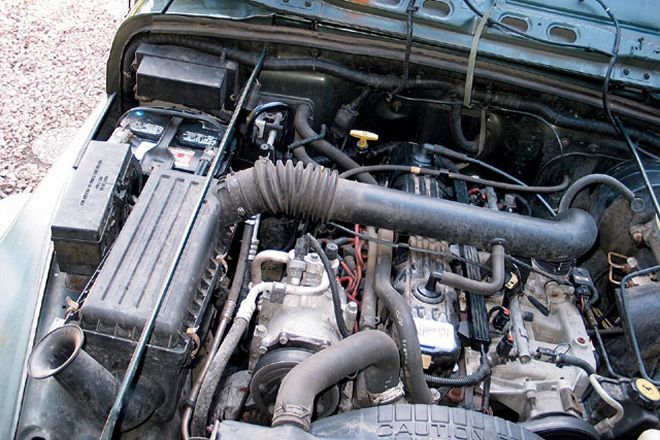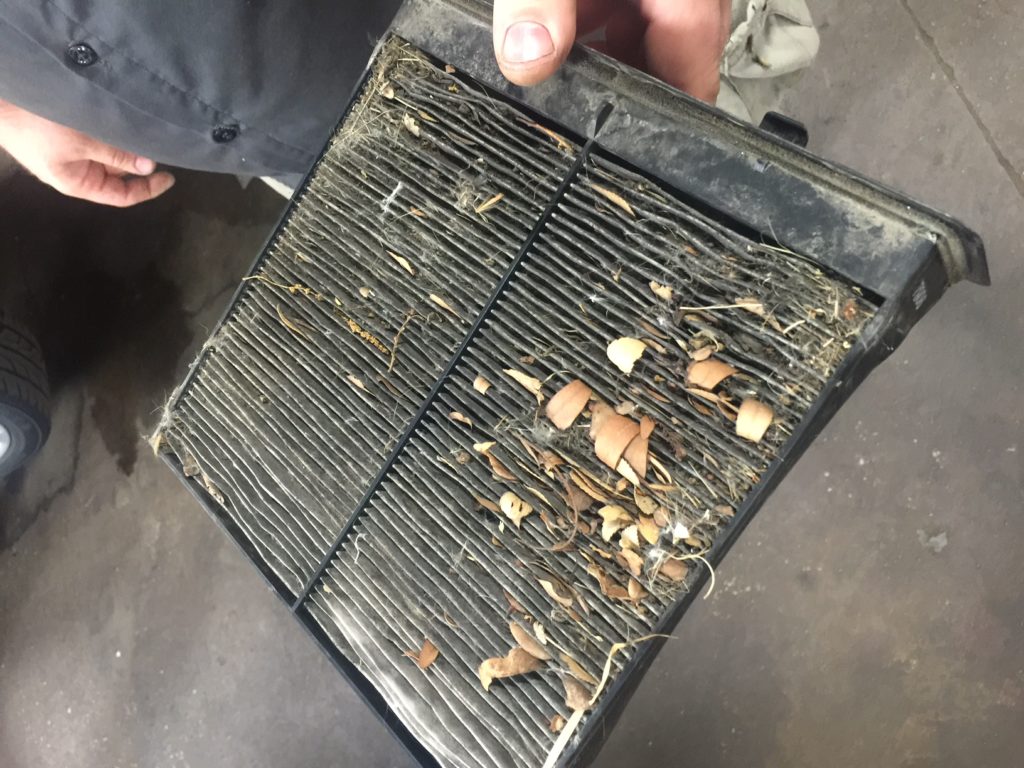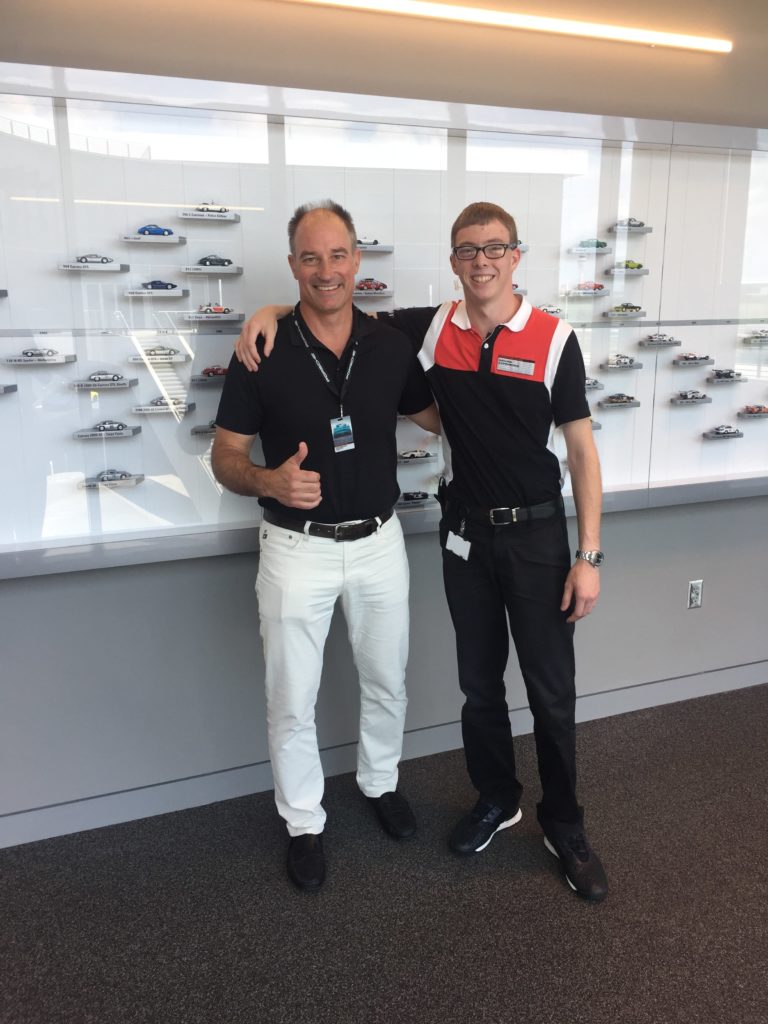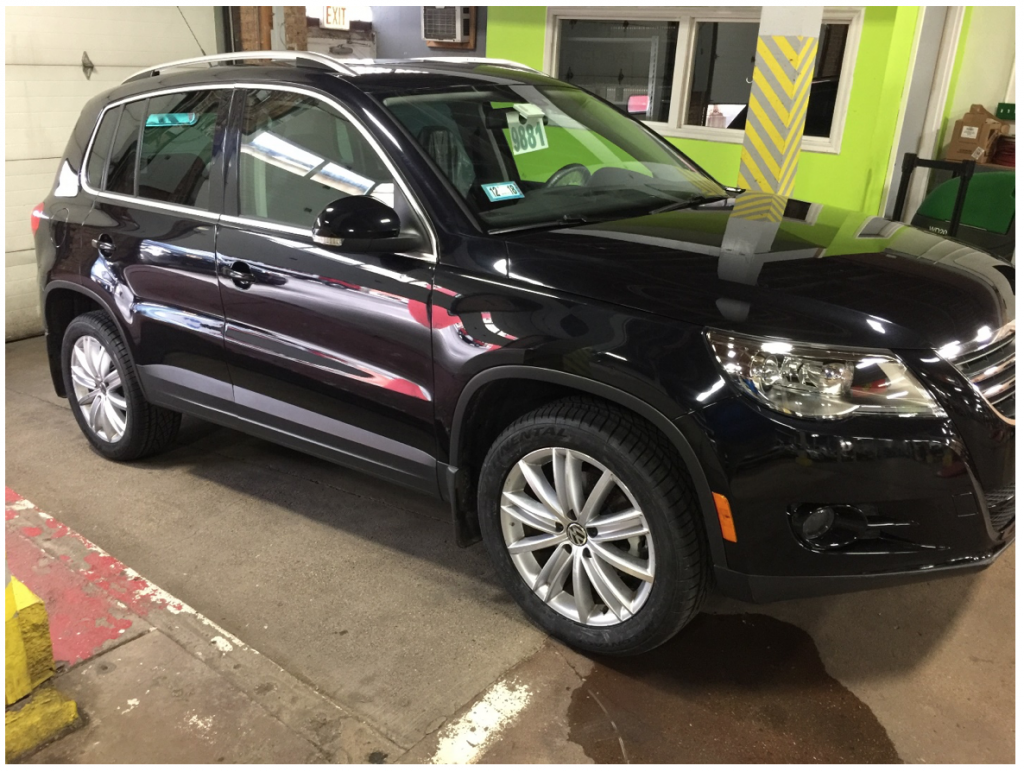Here is a brief video featuring our client’s 1970 Porsche 911T rebuild/restoration. This vehicle was a true “barn find”, arriving at our workshop on a flatbed after having sat for nearly a decade, unused. It took vision and resolve to take this classic air-cooled Porsche out of hibernation and give it a new lease on driving life. We are both excited and proud of the result, and hope you find the video as interesting as it was for us in completing this extensive project!
Author: Midwest Performance Cars
BEWARE OF FLOOD-DAMAGED VEHICLES FOR SALE
With the passing of hurricanes Harvey and Irma, there is a heightened risk for car buyers to find themselves considering a flood-damaged car while shopping for a pre-owned vehicle.
These cars usually begin to show up in the aftermarket from day to weeks to months after significant flooding events have taken place. It has happened before and you can be sure it will happen again. In order to help car shoppers avoid these money pits, we put together a list of conditions to watch out for, call it a Used Car Buyers Guide to Avoiding a Water-damaged Vehicle.
- BRING A FLASHLIGHT. And use it! Look in hard-to-reach area, both inside and out. Your eyes and nose can lead you to evidence of water damage.
- SMELL IT! If a vehicle has sustained flood damage, it will take an extremely thorough detail to eliminate the musty, dirty odor of flood water. If there is excessive perfume or “new car smell” scent pumped into the interior, be cautious and stay alert for further signs of flooding.
- GET DOWN AND LOOK. Look in the wheel wells and in the bottom of the trunk and engine compartment for evidence of a water line or dirt line, where flood waters might have stood. Use that flashlight. Look under the seats, under the dash, and along the bottoms of open doors for evidence of surface rust on any metal components. Under normal usage, these areas should not have rust on them, unless of course they were sitting in water. These spots are difficult to clean if they get rusty.
- FEEL FOR IT. Run your hands along the carpets, into the corners both in the passenger compartment as well as in the trunk, and feel for moisture. Carpets, sound insulation and padding take a long time to dry out, and they may never dry fully unless completely removed from the car, an operation most sellers would not undertake. If you can, lift the carpet up and check the floorboards for rust or excessive dirt.
- LOOK AT THE LIGHTS. Look into the lenses of headlights, fog lights, and taillights for fogging. When submerged, these areas tend to retain moisture, and will usually fog up.
- LIFT THE SPARE. Look in the bottom of the spare tire well for moisture or dirt. These are often overlooked areas where residue collects.
- WORK THEM OVER. Turn on and cycle through ALL of the electrical accessories such as interior and exterior lights, horn, wipers, electric seats, seat heaters and coolers, HVAC system, radio, and glovebox lighting. If anything does not function or is weak, that may indicate water intrusion.
- RUN THE CHECK. Pay the $20 for a complete vehicle title check, do not rely on a partial, “free” title search. Autocheck and Carfax offer complete title records from about $25. It is worth it.
- HAVE IT INSPECTED! When you have found the car for you, and it has passed all of the above checkouts, make the final smart move and pay the money to have a reputable independent repair shop perform a full appraisal. Set aside a couple hundred dollars for the appraisal/inspection, BEFORE you sign your name on the purchase contract. If the private seller or dealer is reluctant to allow an inspection, run away from that car, it’s a red flag for trouble. Often times, a thorough inspection can find issues with a vehicle that can be used to negotiate the price in your favor. Reputable sellers will have no problem with you getting their vehicle checked out by a professional. A paid inspection should include a written report on the vehicle, often containing pictures of areas of concern, and clear explanations of everything that was checked out. When investing tens of thousands of dollars on a pre-owned vehicle, $300 is very inexpensive insurance that you are getting what you expect to receive in that car purchase.
Visit https://midwestperformancecars.com/ for further information, or call our service advisors at 312-432-9492 for all maintenance, repair, or inspection needs for your European vehicle.
Do I really need to change my car’s air filter?
“How often should you change your air filter?”
“What is a cabin air filter?” “Do I even need to change it?”
These are frequently asked questions when it comes to vehicle maintenance. Let’s start with the “engine air filter” of your vehicle. First off, is it important that I change it? The answer is YES, and here is why: Your engine operates on a mixture of gasoline (or diesel) fuel and air. On a modern car, and by modern, we’re talking late 1990’s and newer, there is a computer which monitors the air/fuel mixture and makes continual adjustments in the fuel delivery system in order to get it just right, as well as continually adjusting the other engine systems to make up for when that mixture misses the mark a bit. The proper operation of your engine is relying on enough air being able to move through the air intake system, through the air filter, and into the fuel delivery system. If your air filter is dirty, it can restrict the free flow of air into the engine, contributing to lower gas mileage, rough running, and can even generate a check engine light if it gets dirty enough. That is a bundle of potential trouble, all in the effort to save a few dollars by stretching the life of a dirty air filter. That just does not make sense, and it ends up costing you more money, time and trouble – not worth it!
So we have established that you should keep on schedule for changing your air filter, now let’s see where these air filters can be found.
It is not surprising that many car owners do not know about what the engine air filter does, or even where it can be found. On today’s typical car or truck, air filters can be shaped like a square, a rectangle, or some other trapezoidal shape, unlike the old days when they were a thin circular shape sitting prominently on top of the engine. The old style round air filter was the first thing you would see upon opening the hood of a car. It was easily found, and cheap and easy to replace. In the past, you could unfasten one wing nut, lift off the cover, pop in a new filter, and you’re done!


On most modern cars and trucks today, the air filter is located within a plastic box-like structure which may even be covered up by another plastic engine cover or other vehicle parts, making identification and changing a more involved process. Look at this modern engine bay:

Even worse, here is the engine bay of a 2016 Porsche 911 (991). Can you find the air filters? There are 2 of them!

Don’t feel bad if you can’t see them, you need to REMOVE THE REAR BUMPER to access the twin air filters! Seriously!

Once we actually get to the engine air filters, here are some pictures for you to compare a used, dirty filter with a new and fresh one. You can see how dirty and restricted these filters can get with even normal vehicle operation:


How about the cabin air filter, what is the deal with that?
Well, your cabin air filter does just what it sounds like: it resides in the ventilation system and it filters outside air entering the cabin. Does it get dirty? Take a look at these pictures and see for yourself:


Your cabin air filter traps dust, pollen, hair, particulates, pollution, exhaust fumes, animal waste (yes, animals like to reside under your hood sometimes), basically all manner of substances that you do not want going into your nose, mouth and lungs. Think of your cabin air filter as an investment in your respiratory health, because that’s exactly what it is! Here is a fresh cabin air filter, wouldn’t you rather be breathing air that passes through this?

Here is a smart-consumer suggestion: When you take your vehicle in for service, and the shop or dealership recommends new air filters, ask them to send you pictures of the air filters in your vehicle, so you can see for yourself before authorizing replacement. You can also ask them to keep the old filter for your inspection. At Midwest Performance Cars, we take pictures of all relevant vehicle conditions like these and send them to our customers along with our service recommendations. We do this because we want our clients to feel completely assured that what we are recommending is what truly needs attention, repair, or replacement.
We hope this article has “cleared the air” for you regarding the air filters on your vehicle and the need for good maintenance.
Bookmark this blog page, and follow us on the social media tabs at the top of our website, for regular updates of information and education about vehicle repair and maintenance.
MPC visits Porsche Experience Center Atlanta
One of our Porsche technicians was recently traveling with his spouse to Atlanta, when he messaged me that the Porsche Experience Center had a few openings on the day he would be there, and that he was going to drive the new 718 Cayman on a track, skid pad, and various other drive challenges.

It took me all of 30 seconds to start checking airline schedules, reach out to my own better-half control tower for clearance, and then contact the Porsche Center to book an appointment. What a great opportunity to spend some quality time with a new Cayman S in the company of a Porsche driving instructor, as well as have a blast challenging Brandon, our water-cooled Porsche tech, to some driving skills competition!

It was an early start, catching the 5:20 am flight from Chicago to Atlanta, but there was not much sleep to be had, given the anticipation of driving as well as touring the Porsche museum displays afterward. One uneventful flight followed by a 10 minute Lyft ride from the Airport and I was at One Porsche Drive, Atlanta GA.

This is a helluva building they have constructed, on a perfect patch of land next to Atlanta’s Hartsfield International Airport, and Porsche clearly put their sound absorption expertise into the project, because when inside, you would never know that a mere 1000 feet away is the flight path for departing jetliners.

Setting foot onto the expansive outdoor patio and viewing area, I was welcomed by the sound of a silver GT3 ripping through a wide sweeper and competing with the departing Boeing Dreamliner screaming overhead. It was a gearhead’s dream. A quick coffee from the Porsche Center café, and it was on to meeting up with my driving instructor, Aaron.

Aaron was a very nice kid, half my age, athletic and quick. I call him a kid, but he has been racing since before he was of age to get a license, so the “kid” part is only in relative terms. On the way down to the car at trackside, we talked a bit about what I was expecting and looking to get out of the driving session. The Cayman S sat there awaiting our arrival, already running and checked out by the crew, in the shade as well which was very nice since the late morning temps had climbed into the upper 80’s by now.

As an aside, I was very aware of just how fortunate of a setting I was in: here I am, about to pilot a pretty close-to-new Porsche Cayman S around a purpose built facility, next to an experienced racing driver and benefitting from his real time advice and guidance, all while luxuriating in ice-cold A/C keeping the cockpit uber comfortable. Thank you Jesus, I’ve arrived.
When booking these appointments, most people probably think that 90 minutes is a little meager, I know that was my thought. Eighty-eight minutes into my drive circuit, with my left leg almost permanently frozen into position on the dead pedal in order to keep myself centered in the too-comfortable-to-be-track-supportive driver’s seat, I turned over the wheel to Aaron for a couple of hot laps. Suffice it to say that the grin on my face was just as wide as when I was driving, probably more so because I no longer had to maintain focus and concentration, I was only charged with enjoying the ride.
I thoroughly enjoyed the entire program here at Atlanta, from the progressively hotter laps, to the slide-inducing kick-plate track, through the dry slalom and the low friction drifting circle, everything was geared towards exploring the performance that these incredible vehicles are capable of.
After the driving portion of the day, it was on to the Porsche Heritage Center and Classic Gallery, followed by a stop at the Classic Car Workshop.
[rev_slider alias=”blog porsche”]
I highly recommend a visit to the Porsche Experience Center for any owner or enthusiast of Stuttgart’s greatest offerings. I am already looking forward to my next visit, when I will go to the facility in Los Angeles, which has an even larger handling circuit track and several additional features. For L.A., I am going to have to opt for the GT4 or maybe the 911 GT3. Go big or go home, right?
[rev_slider alias=”blog porsche2″]
Case study: Low –mileage 2009 Volkswagen Tiguan
This 7 year old VW Tiguan came to us with just under 50,000 miles, a relatively low-mileage vehicle that had been well-maintained by its owner. The owner, seeking a second opinion, presented us with the local VW dealer’s service department inspection and write-up of recommended work. The dealership had called out more than $6000 of work to be performed, ranging from tire replacement (which was needed) to replacing the rear main engine seal, which was NOT needed. Also included in their recommendations were a leaking vacuum pump, leaking axle seal, a fuel injector cleaning, and a coolant flush.
Upon inspection we found that most of the recommended work was not presently needed. While the Volkswagen dealership had a very nicely printed inspection report, it merely featured stock photos of the called out conditions rather than actual photos of the customer’s vehicle. It also called out work based on time & mileage rather than the actual condition of the vehicle.

When we inspect for fluid leaks, we rank the condition in one of three categories: Level 1, Level 2, or Level 3 leak. A Level 1 leak is the slightest evidence of fluid, usually just a small, darkened area on the metal, which we would make note of and look for on the next service visit. A Level 2 leak is slight seepage, still not enough to leave any fluid on your garage floor. Level 2 leaks can stay unchanged for an extended period, or can worsen quickly, it is kind of a tossup, and we explain this and leave it up to the customer to either repair or keep an eye on for the future. A Level 3 is a leak that is weeping/dripping. This is something that you would see on the garage floor, and we would recommend an immediate repair.
When we perform our standard courtesy check, we take actual photos of the conditions we find and they are included in the vehicle report given to our customer. By doing this, our customers feel more secure in the knowledge of what their vehicle actually needs, and not that they are just being sold additional work.
This Tiguan had minor, Level 1 leaks at a turbocharger solenoid and a valve cover. These did not require repair, but were only areas to watch for at the next oil service. While the rear main seal had a Level 2 leak, it still did not merit immediate repair, and only exhibited slight wetness at the transmission/engine mating area. Again, we advised re-inspection at the next oil change. Coolant was tested and found to be in good condition, and brake fluid flush was recommended, with fluid containing more than 4% moisture.
New Continental tires were mounted and balanced at a significant savings over the dealer-quoted replacements.
The end result of our inspection and recommendations was required maintenance and repair totaling 1/3 the cost of what the dealer had recommended, a significant savings on a very serviceable car with a long life ahead of it.
